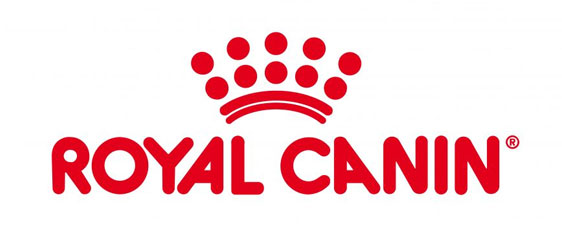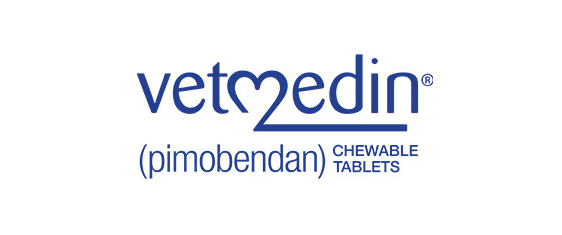Lantus Insulin
This is a prescription item
We’ll collect your veterinarian’s information at checkout to authorize the prescription.

Don’t have a veterinarian? Book an appointment with Vetster
 Temporarily Out of Stock
Temporarily Out of Stock
 Thank you, we will notify you when this product is available.
Thank you, we will notify you when this product is available.
What is Lantus Insulin?
Lantus Insulin (insulin glargine injection) is an injectable, long-acting insulin for treating diabetes mellitus in dogs and cats. Lantus Insulin controls blood glucose levels to help alleviate the symptoms of diabetes. It is used with U-100 insulin syringes only (sold separately). Lantus Insulin requires a prescription from your veterinarian.
NOTE: USE WITH U-100 INSULIN SYRINGES ONLY. Lantus Insulin requires refrigeration and must be kept at refrigerator temperatures at all times. To ensure proper temperature, it requires overnight shipping at an additional cost.
For:
Cats and Dogs
Benefits:
- Controls your pet's glucose levels
- Alleviates symptoms of diabetes
- Long-acting
How does Lantus Insulin work?
Diabetes mellitus results when your pet's pancreas does not produce adequate insulin, or when the insulin that is produced is not effective. Lantus Insulin is an insulin glargine injection that offers long-acting control of hyperglycemia in pets with diabetes mellitus. When injected, Lantus Insulin forms a micropreciptate in the subcutaneous space (below the skin), which allows for prolonged absorption.
Cautions:
USE WITH U-100 INSULIN SYRINGES ONLY. Lantus Insulin requires refrigeration until opened (in-use). Overnight shipping is required and additional shipping charges are applicable. Rarely, allergic reactions such as hives, difficulty breathing, or swelling of the lips, tongue, or face can occur. Seek emergency veterinary medical attention if your pet experiences an allergic reaction, hypoglycemia (low blood sugar), hypersensitivity, or hypokalemia. Never share a syringe between pets, as infections can be passed. Do not use with thiazolidinediones (TZDs) medication.
Brand Name:
Lantus Insulin (Sanofi)
Generic Name:
Insulin glargine injection
What is the most important thing I should know about Lantus Insulin?
Lantus Insulin is available by prescription as a 10 ml multi-dose vial containing 100 units (U) per ml of insulin glargine injection per ml and is given to dogs or cats by subcutaneous injection. LANTUS INSULIN SHOULD BE USED WITH U-100 INSULIN SYRINGES ONLY. Diabetes mellitus is a disease where the body produces insufficient insulin, which may result in high blood glucose. Symptoms of high blood glucose include increased thirst, urination and appetite, as well as weight loss, high levels of glucose in the urine, ketones in the urine, cloudy eyes and loss of vision (diabetic cataracts). Lantus Insulin is not a cure for diabetes mellitus. It helps control or eliminate many of the complications associated with diabetes. It also helps to prevent the development of life-threatening ketoacidosis (buildup of acids in the blood). Response varies depending upon the pet, but can be dramatic. In most cases improvement can be seen within a few days. In cats, treatment may lead to diabetes remission (insulin injections no longer required). If Lantus Insulin is discontinued or not given as directed, the signs of diabetes will likely return and life-threatening complications, such as ketoacidosis, may develop.
What should I discuss with my veterinarian before giving Lantus Insulin?
Before using Lantus Insulin, tell your veterinarian if your pet has any other medical conditions such as: vomiting and/or diarrhea, shows signs of extreme drowsiness or fatigue (lethargy), and/or shows signs of severe ketoacidosis. Tell your veterinarian if your pet takes any other prescription or over the counter medications, including vitamins, minerals, and herbal supplements. Tell your veterinarian if your pet has any liver or kidney disease; inflamed pancreas (pancreatitis), underactive (hypo) or over-active (hyper) thyroid, Cushing's disease or if your pet is pregnant, nursing, or is used for breeding.
How should Lantus Insulin be given?
LANTUS INSULIN SHOULD BE USED WITH U-100 INSULIN SYRINGES ONLY. Lantus Insulin should be given according to your veterinarian's instructions. Only use Lantus Insulin if the solution is clear and colorless with no visible particles. Lantus Insulin is given using a U-100 syringe only. Use of a syringe other than a U-100 syringe will result in incorrect dosing. Do not administer intravenously or via an insulin pump. Administer subcutaneously only. Do not dilute or mix Lantus Insulin with any other insulin or solution. Individualize and adjust the dosage of Lantus Insulin based on the individual pet's metabolic needs, blood glucose monitoring results and glycemic control goal. Dosage adjustments may be needed with changes in physical activity, changes in meal patterns (e.g. timing of food intake or macronutrient content - nutrients that give your body energy to perform essential functions), during acute illness or changes in renal or hepatic function. Dosage adjustments should only be made under medical supervision with appropriate glucose monitoring. Do not reuse a syringe. Dispose of all syringes in an appropriate puncture-resistant disposal container. Lantus Insulin should be stored in an upright position under refrigeration (36º-46º F). Do not freeze. Protect from light. Keep this medication out of the reach of children and pets.
What are the potential side effects of Lantus Insulin?
Rarely, allergic reactions to insulin can occur. Seek emergency veterinary medical attention if an allergic reaction is experienced (difficulty breathing, swelling of the lips, tongue, or face, or hives). Other serious side effects can occur with or without warning. The most common insulin-related side effect is low blood sugar (hypoglycemia) with symptoms that include: lethargy, staggering gait, seizure or coma. Contact your veterinarian immediately if your pet has a medical problem or side effect from Lantus Insulin therapy. Other side effects may occur. Talk to your veterinarian about any side effect that seems unusual or bothersome to your pet.
What happens if I miss giving a dose of Lantus Insulin?
Follow your veterinarian's directions if you miss giving a dose of Lantus Insulin. To prevent missed doses, be sure to always have enough Lantus Insulin on hand.
What happens if I overdose my pet on Lantus Insulin?
Contact your veterinarian immediately if you inject more than the prescribed amount of Lantus Insulin.
What should I avoid while giving Lantus Insulin to my pet?
LANTUS INSULIN SHOULD BE USED WITH U-100 INSULIN SYRINGES ONLY. Lantus Insulin should be given to dogs and cats only. Lantus Insulin should not be administered to humans. Call a physician immediately if you accidentally inject yourself with Lantus Insulin. Do not give a dose of Lantus Insulin to a pet experiencing an episode of low blood glucose (hypoglycemia). Common causes for hypoglycemia include excessive doses of insulin, failure to eat, accidental doubling of insulin dose, and strenuous exercise.
What other drugs will affect Lantus Insulin?
Some medications may increase the risk of hypoglycemia when used with Lantus Insulin, including antidiabetic agents, ACE inhibitors, angiotensin II receptor blocking agents, disopyramide, fibrates, fluoxetine, monoamine oxidase inhibitors, pentoxifylline, pramlintide, propoxyphene, salicylates, somatostatin analogs (e.g., octreotide), and sulfonamide antibiotics. Some medications may decrease the blood glucose lowering effect of Lantus Insulin, including atypical antipsychotics (e.g., olanzapine and clozapine), corticosteroids, danazol, diuretics, estrogens, glucagon, isoniazid, niacin, phenothiazines, protease inhibitors, somatropin, sympathomimetic agents (e.g., albuterol, epinephrine, terbutaline), and thyroid hormones. Some drugs that may increase or decrease the blood glucose lowering effect of Lantus Insulin include beta-blockers, clonidine, and lithium salts. Pentamidine may cause hypoglycemia, which may sometimes be followed by hyperglycemia. Some medications that may blunt signs and symptoms of hypoglycemia include beta-blockers, clonidine, guanethidine, and reserpine. Increased frequency of glucose monitoring may be required when Lantus Insulin is co-administered with these medications. Do not give any other prescription or over the counter medications, including vitamins, minerals, and herbal products, without first talking to your veterinarian or pharmacist during treatment with Lantus Insulin.
Lantus Insulin Directions:
- Use according to your veterinarian's instructions.
- Lantus Insulin should be injected subcutaneously. Do not inject intravenously (in the vein).
Any change of insulin should be made cautiously and only under veterinary supervision.
Lantus Insulin Dosage:
| Weight | Dosage |
|---|---|
| All weights | Use as prescribed by your veterinarian. |
| Horses | Do not use! |
|---|
Storage:
Unopened Lantus Insulin vials should be stored in a refrigerator, 36°-46°F (2°-8°C). Do not freeze. Discard vial if frozen. Discard after the expiration date.
Lantus Insulin Ingredients:
| Active Ingredients (per ml) | Amount |
|---|---|
| Insulin glargine | 100 units (3.6378 mg) |
| Zinc | 30 mcg |
| M-cresol | 2.7 mg |
| Glycerol 85% | 20 mg |
| Polysorbate 20 | 20 mcg |
| Other Ingredients: Water for injection. | |
| pH is adjusted by addition of aqueous solutions of hydrochloric acid and sodium hydroxide. | |
 Swipe
Swipe
Customers also boughtView All
 Swipe
Swipe










































